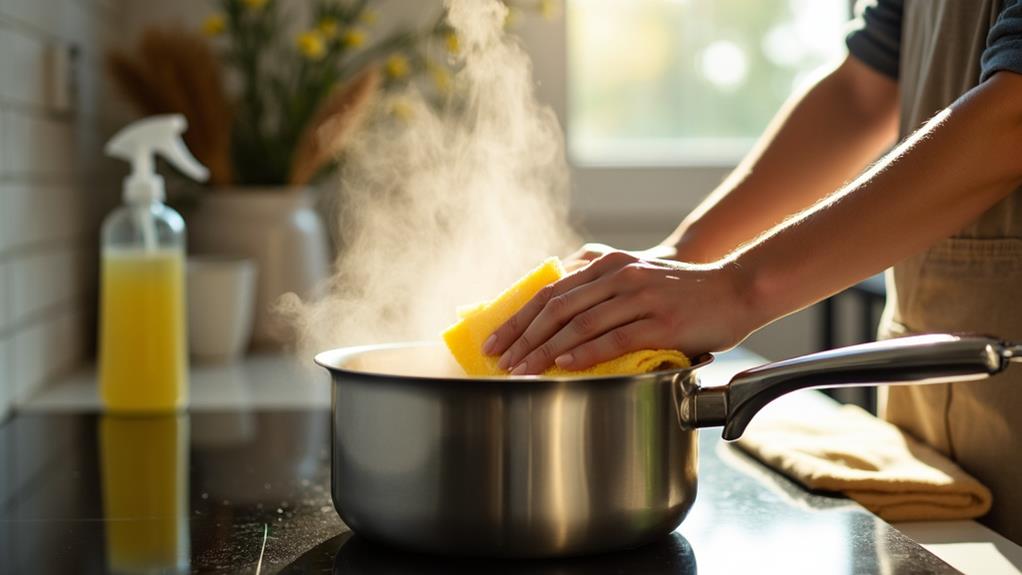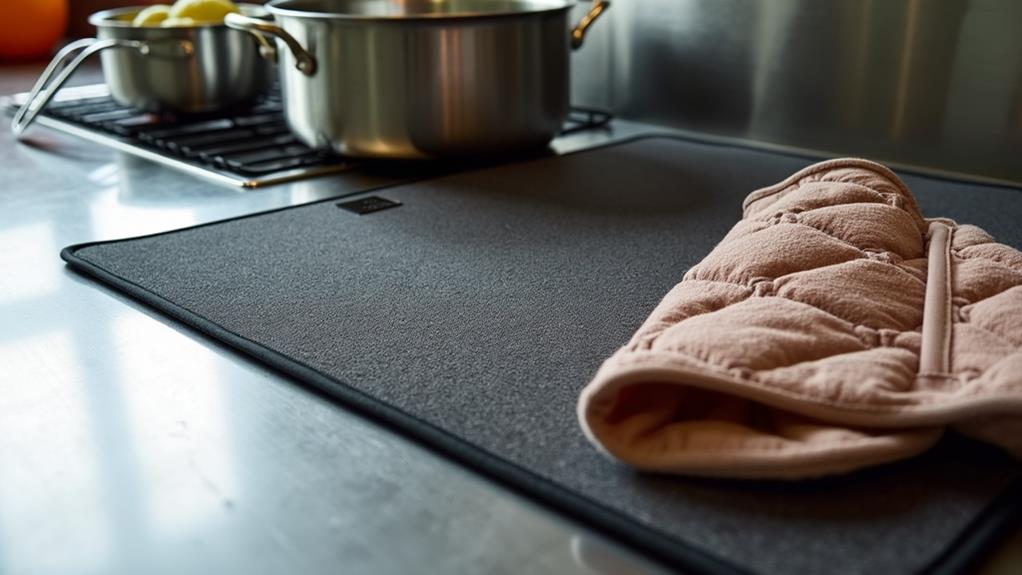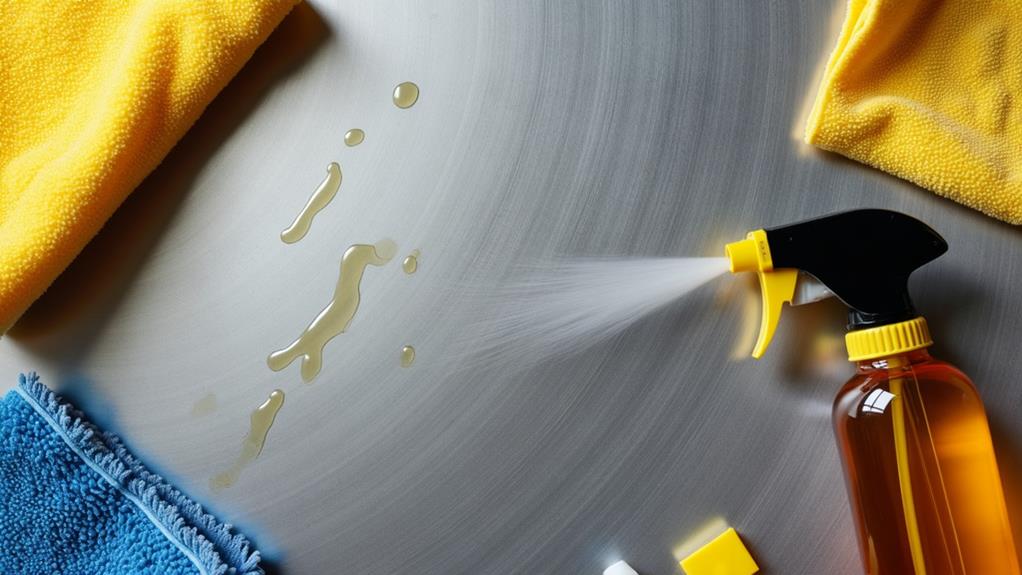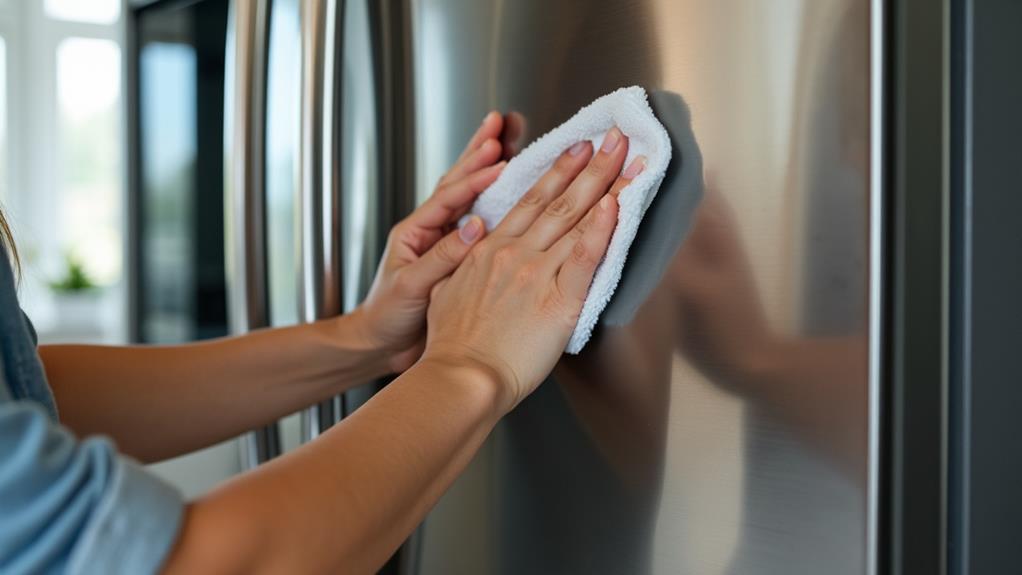How to Remove Tarnish From Stainless Steel Jewelry
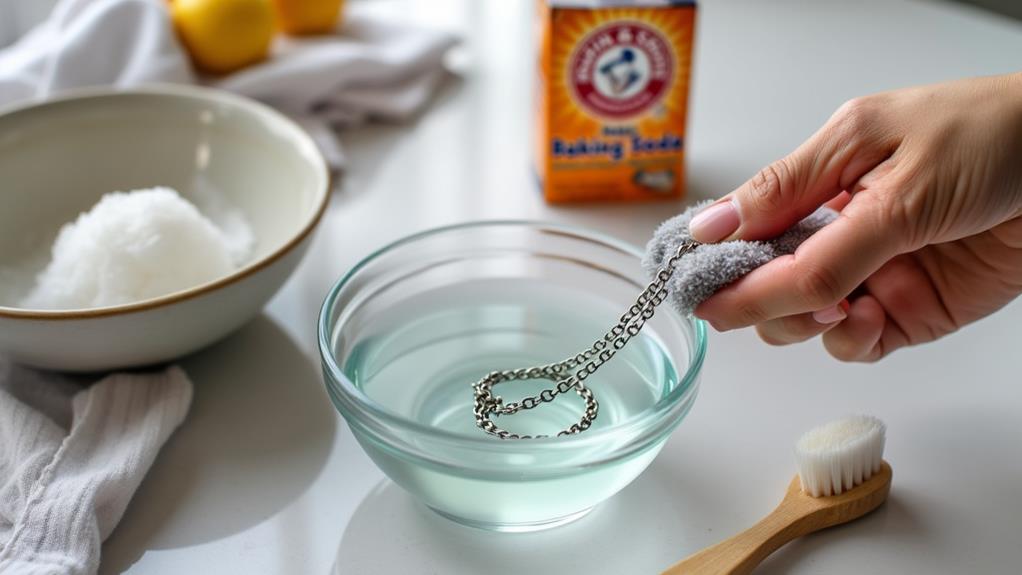
To remove tarnish from your stainless steel jewelry, start by mixing a few drops of mild dish soap with warm water. Soak your jewelry for about 15 minutes, then gently scrub tarnished areas with a soft-bristle toothbrush. Rinse thoroughly and dry with a soft cloth. For tougher tarnish, create a paste with three parts baking soda and one part water, apply it, and let it sit for 10-15 minutes before rinsing and drying. Ultimately, polish your jewelry using a microfiber cloth and a small amount of stainless steel polish. Ready to make your pieces sparkle again? There's more to uncover.
Identify Tarnish on Jewelry
Identifying tarnish on your stainless steel jewelry is crucial before you start cleaning. Tarnish causes a dull, sometimes yellowish or brownish film on the surface of your jewelry. It's significant to distinguish tarnish from mere dirt or smudges, which are easier to clean. Inspect your pieces under good lighting. Rotate them to catch the light and reveal any discoloration or dull patches.
Understanding tarnish causes can help you prevent future issues. Tarnish forms when the metal reacts with sulfur compounds in the air. Although stainless steel is resistant to corrosion, it's not completely immune. Exposure to chemicals like hairspray, perfume, and even sweat can accelerate tarnishing. Proper jewelry care involves minimizing exposure to these elements. Remember to remove your jewelry before swimming, showering, or exercising.
Regularly polishing your stainless steel pieces with a soft cloth can help maintain their shine and prevent tarnish buildup. If you notice any tarnish, address it promptly to avoid deeper corrosion. Keeping your jewelry in a dry, airtight container when not in use can also reduce tarnish development. By staying vigilant and practicing good jewelry care, you'll keep your stainless steel pieces looking their best.
Gather Cleaning Supplies
To effectively remove tarnish from your stainless steel jewelry, you'll need to gather the appropriate cleaning supplies initially. Start with a soft cloth, which is crucial for gently wiping your jewelry without scratching it. Next, grab a small bowl to mix your cleaning solutions. You'll also need some mild dish soap and warm water, which form the basis of many effective cleaning methods.
Include a toothbrush with soft bristles in your kit. It's perfect for reaching crevices and intricate designs where tarnish often hides. For more stubborn tarnish, consider using baking soda or a specialized stainless steel cleaner. These items are gentle yet effective, ensuring your jewelry's protective coatings aren't damaged.
Have some paper towels or another absorbent material on hand to dry your jewelry after cleaning. This helps prevent water spots and further tarnish. If you prefer natural cleaning methods, a bit of white vinegar or lemon juice can also be useful.
Use Soap and Water
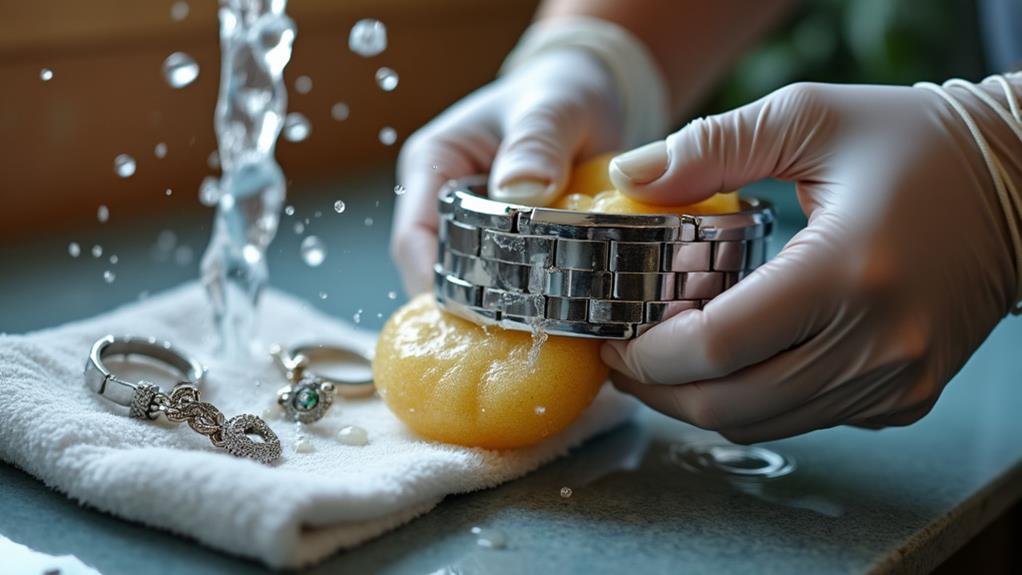
Some may find it surprising, but soap and water can be incredibly effective for removing tarnish from stainless steel jewelry. This simple cleaning solution is often overlooked, yet it can work wonders in maintaining your jewelry's shine. Here's how you can do it:
- Prepare the Solution: Mix a few drops of mild dish soap with warm water in a small bowl. Make certain the soap is gentle to avoid damaging the jewelry.
- Soak and Scrub: Place your tarnished jewelry into the soapy water and let it soak for about 15 minutes. Use a soft-bristle toothbrush to gently scrub the surface, paying close attention to crevices where tarnish can build up.
- Rinse and Dry: Rinse the jewelry thoroughly under warm running water to remove any soap residue. Dry it completely with a soft cloth to prevent water spots.
This method is not only effective but also safe for regular jewelry maintenance, keeping your pieces looking their best without the need for harsh chemicals. By incorporating this simple routine into your cleaning solutions, you'll guarantee your stainless steel jewelry remains tarnish-free and dazzling.
Apply Baking Soda Paste
When tackling tougher tarnish on your stainless steel jewelry, applying a baking soda paste can be incredibly effective. Begin by mixing three parts baking soda with one part water to form a thick paste. The baking soda benefits are numerous; it's a mild abrasive that will scrub away tarnish without scratching your jewelry.
Next, gently apply the paste to your tarnished pieces using a soft cloth or an old toothbrush. Make sure to cover all areas, focusing on spots with the most tarnish. The DIY cleaning approach allows you to control the pressure, ensuring you don't damage your jewelry.
Let the paste sit on the jewelry for about 10-15 minutes. This gives the baking soda enough time to break down the tarnish. Afterward, rinse the jewelry thoroughly with warm water to wash away all the paste. Pat dry with a soft towel to remove any remaining moisture.
Using baking soda for this simple yet effective cleaning method can revive the shine of your stainless steel jewelry. Remember, regular maintenance can prevent heavy tarnish buildup, keeping your pieces looking their best with minimal effort.
Polish and Buff
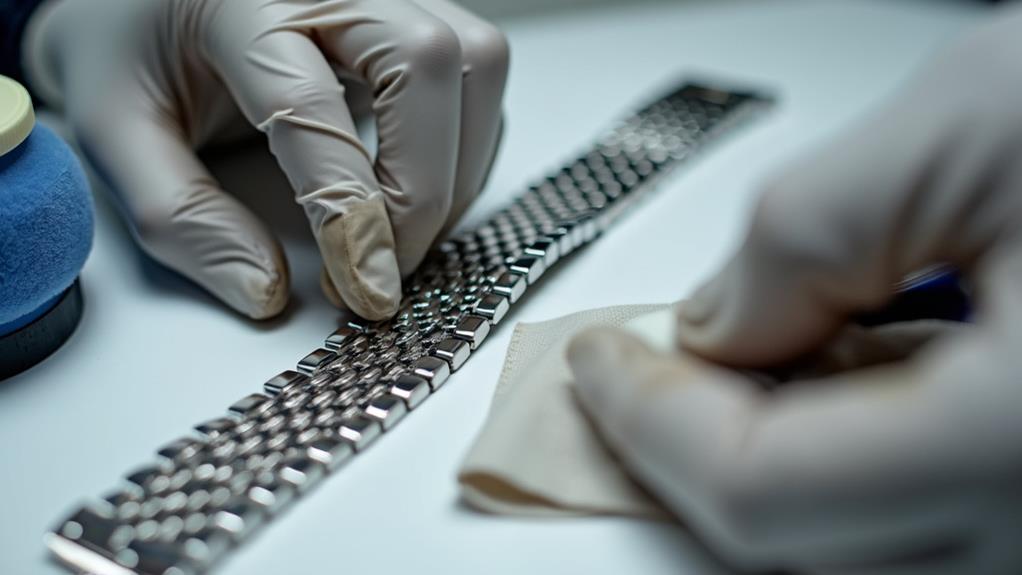
Polishing and buffing your stainless steel jewelry brings out its natural luster and guarantees it looks as good as new. After removing tarnish with baking soda paste, it's crucial to polish and buff your pieces to improve their shine. Here's how you can do it effectively using the right polishing techniques and buffing tools.
First, grab a microfiber cloth or a dedicated jewelry polishing cloth. These materials are soft and won't scratch the surface. Apply a small amount of stainless steel polish to the cloth.
Next, gently rub the polish onto your jewelry in a circular motion. This technique guarantees that you cover all areas and avoid streaks. Be thorough but gentle, as excessive pressure could damage delicate parts of your jewelry.
Finally, buff the jewelry to a high shine using a clean, dry portion of the cloth or a buffing tool like a Dremel with a soft polishing wheel. Buffing tools make the process quicker and more efficient, especially for intricate designs.
Remember to follow these steps:
- Use the right cloth: Microfiber or jewelry cloth.
- Apply polish correctly: Circular motions.
- Buff thoroughly: Use a clean cloth or a buffing tool.

